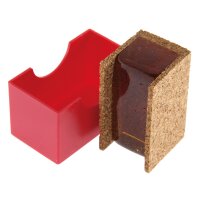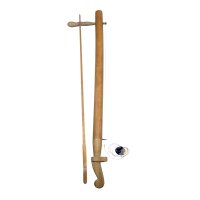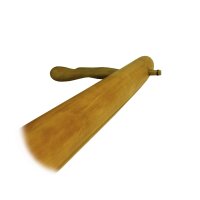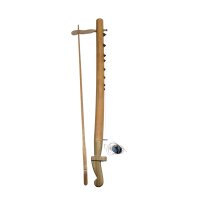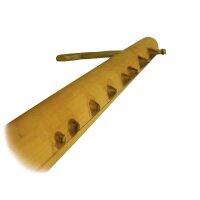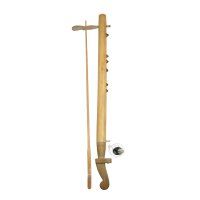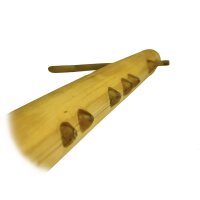K'ni Mouth Violin
Vietnam is the home of the K'ni (also Ðàn K'ný) mouth violin. There it is one of the instruments used by the minorities living in the Central Highlands, including the Jarai (Gia Rai), Ba Na, Xo-dang and Ro Ngao. In earlier times it was heard only in the communal institutions of ethnic minorities - making music with this instrument privately was outlawed because of the mystical sounds it produces. The player was a mediator of the divine.
The K'ni is a one-stringed instrument whose body is made of a bamboo stick. The player generates the sounds with a bow which is also usually made ??of bamboo. The special feature of this instrument is that it does not have a separate soundbox. Instead, the mouth is used. While the player is striking the strings with the bow or tapping it lightly, he modulates different tones ( harmonics, overtones) with his mouth more or less wide open. He does this by clamping a plate attached to the string with a cotton thread behind his teeth, thereby transmitting the sound to the oral cavity. Therefore it is inevitable that music resonates, bearing some resemblance to singing. The Jarai people therefore also call the K'ni the "singing instrument".
The playing techniques are similar to those of the Erhu (Ðàn nh?). The string can be caused to vibrate either with a traditional bamboo bow or with a modern horsehair bow. It takes some practice to make a (melodious) sound with this instrument.
The K'ni mouth violin appears, at first glance, to be an instrument constructed in a simple fashion. But when the creation of resonance is taken into account, it is evident that a great deal of knowledge, or at least a wealth of experience, was needed to develop and manufacture it.
